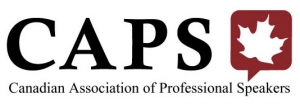7 Ways Personality Affects Networking
“Research has confirmed that personality is a compilation of four basic behavioral styles. Each of us incorporates the four styles into thoughts, conversations and behavior.
Over 75% of the contacts you make will be with differing (and sometimes contradictory) personality styles. We’ve all had the experience of meeting someone where the contact and the conversation have been less than pleasant, even uncomfortable.
This is sometimes the case when two people with different “”preferred”” networking styles meet. Because their networking interests and their priorities are at opposite ends of the personality spectrum, they fail to connect properly, essentially creating a non-connection which can leave both with a negative perspective of the experience. So the next time you feel this happening, here’s what you can do.
- Accept that personality styles impact networking results. We are highly emotional creatures with individual and unique characteristics. As such we must accept that we may not always connect with others in ways we anticipate. Up to 75% of the people we meet think differently and as a result tend to behave differently than we do. It’s a fact of life.
- Recognize that stress can affect networking behavior. Stress is a natural response to real or perceived danger. Meeting others takes many people out of their natural comfort zone and exposes them to the (perceived) risk of being rejected. Their networking style becomes an expression of stress-related behavior that they may not even be aware of.
- Become more aware of your preferred networking style. Your networking style is a direct extension of your personality. It has a tremendous impact on the way others perceive you. You cannot change your style but by becoming more aware of your preferred style you can more easily leverage your strengths and minimize the chances of falling prey to stress-related behavior in future interactions.
- Clarify the preferred networking style of your target market and ideal clients. This tactic can, by itself lead to more and better networking success. Review the main personality traits of your clients and colleagues. Then prepare for networking success by planning communication options that allow you to complement their networking style. That way, you can more effectively leverage opportunities with these important contacts into additional results.
- Develop networking style success strategies for each networking style. Develop the discipline of identifying the preferred networking style of your conversation partner. Then adapt your communication to facilitate and develop increase rapport and build trust. Become more aware of stress-related networking fallback styles and techniques to move others into their networking comfort zone. Others will automatically feel more comfortable with you and work on your behalf.
- Don’t let first impressions be your only gauge of relationship compatibility and success. This reality can be the most valuable networking idea in this document. The next time you meet someone who rubs you the wrong way or turns you off, remember the fact that it may not be them, it may be you. Raise your networking antennae above your discomfort and assess her/him and the networking style. You find, more often than not, the differing styles are causing this.
- Above all, don’t take it personally. Meeting others can be a traumatic experience. When others don’t respond as positively as we expect or want, we tend to take it personally. Use the information in this document to remind you that it’s not you they are not responding to, it’s your networking style.
Want to know what you preferred networking style is? Email me at info@NetworkingForResults and I’ll send you my proprietary NfR Networking Personality Style Assessment to determine how to maximize this important area.


